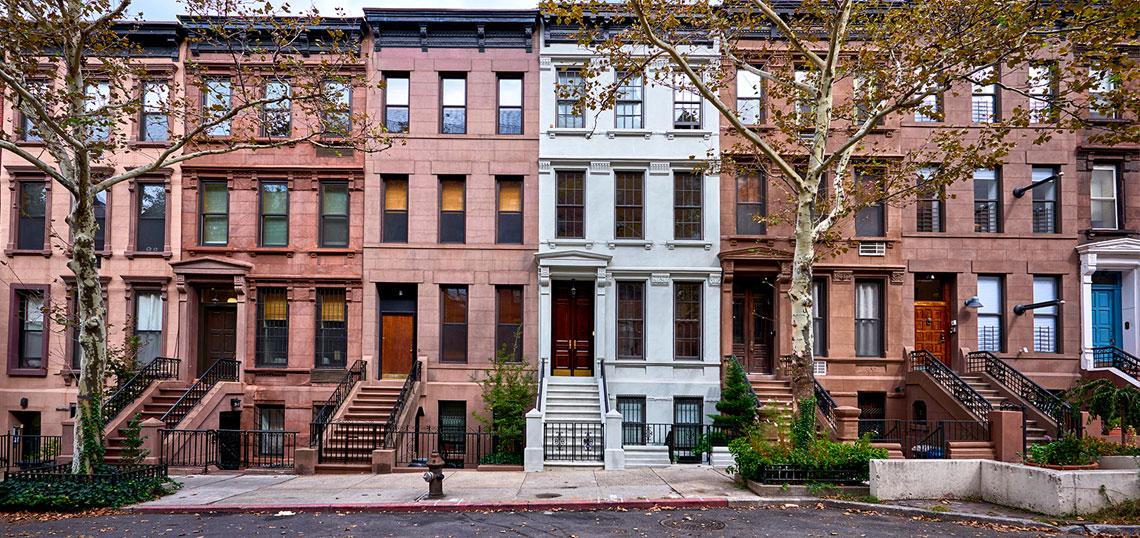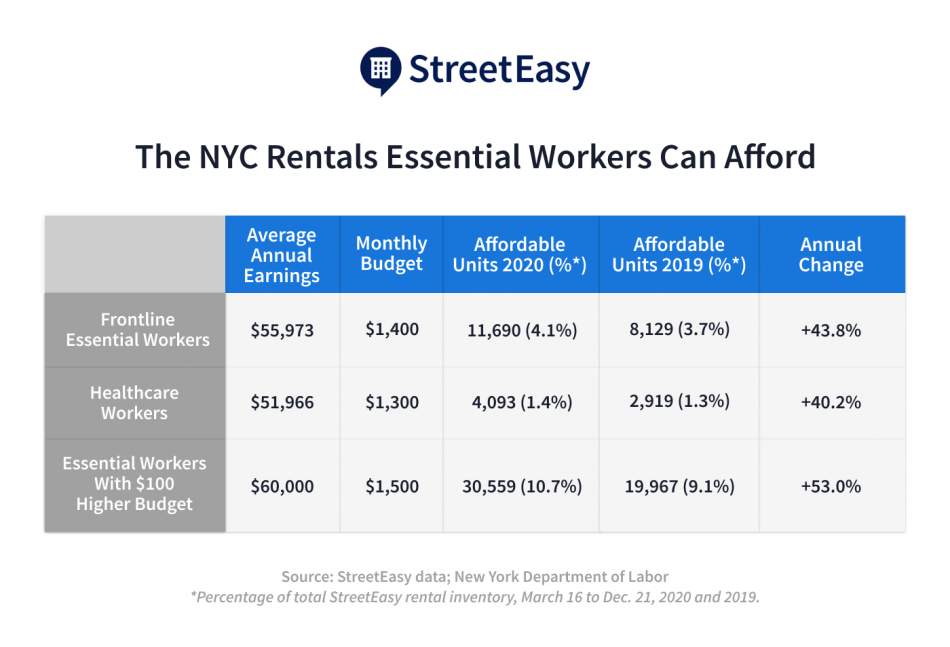We are in the middle of a housing crisis, unemployment is at record highs, and many are struggling to pay for housing. While rents have seen a significant dip across the city, most New Yorkers who would be classified as essential workers (i.e. 25 percent of the city's total workforce, or about 1 million individuals) still find obtaining housing within their means largely out of reach.
As the Times reports, from mid-March to the end of 2020, the city's inventory of affordable, market-rate housing rose to 11,690 homes citywide, a 44 percent increase over 2019. However, the count, drawn from a recent StreetEasy study, represents a paltry 4.1 percent of the city’s total market-rate rental stock.
“It sounds like a really compelling stat,” said Nancy Wu, an economist with StreetEasy, to the Times. “But at the end of the day, about 96 percent of apartments on StreetEasy are still unaffordable.”
Indeed, the median rent in Manhattan clocked in at $2,750 in January. While this represented a 15.5 percent drop over 2019 (the largest year-over-year fall since 2010), considering essential workers earn on average $55,973 annually, the decline has been of little value. The median still leaves an essential worker spending 56 percent of his or her gross income on housing (the general recommendation is 30 percent, or in this case about $1,400).
The study also highlights that decreases in rents were largely recorded in the priciest NYC neighborhoods, where only 12 percent of essential workers reside. Available units were also heavily skewed towards studios. Nearly half of essential workers have at least one child.
In Brooklyn and Queens, where half the workforce can be found (Brooklyn 28 percent, Queens 22 percent), discounts have been much less dramatic (7 percent) due to demand. This is not a huge surprise. As we've been seeing, many Manhattanites have sought out Brooklyn digs as pandemic alternatives offering private outdoor space and easy access to parks.
On the whole, in neighborhoods with high concentrations of rent-burdened residents (i.e. those paying more than 30 percent of their income), prices hardly changed. In some cases, these neighborhoods lost affordable units.

While the data is bleak, there is some hope. Analysts at StreetEasy believe rents will continue to soften over the coming months, even as leasing activity becomes more active. The reality, they underscore, is that NYC is still grappling with a near-record level of inventory resulting from high unemployment and outbound migration.
- Affordable Housing (Urbanize NYC)







